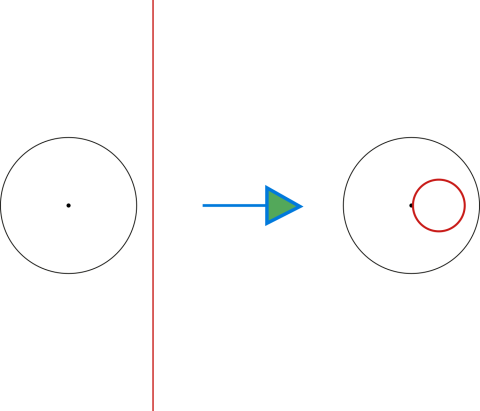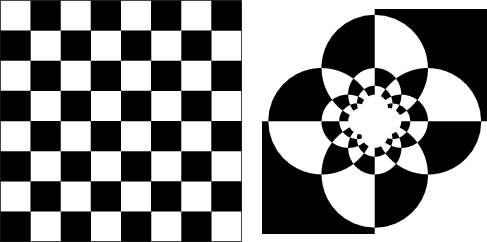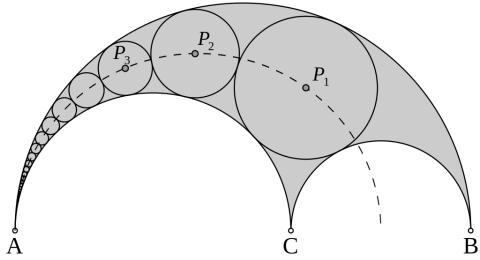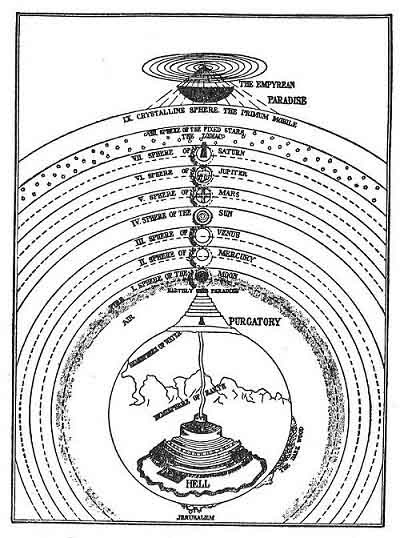No one shall expel us from the paradise that Cantor has created for us.
-David Hilbert
To the extent that a mathematical theorem can be considered controversial, Cantor’s Theorem has historically been quite a controversial statement. The theorem, which, we remind you, states that, for any set , the power set
, which consists of all subsets of
, is strictly larger than
(or, in a commonly cited special case, the set of all real numbers,
, is strictly larger than the set of all natural numbers,
), was attacked by a number of Cantor’s illustrious contemporaries, among them Kronecker and Poincaré, who objected to Cantor’s manipulation of infinite sets as mathematical objects in their own right.
Cantor’s work also had prominent defenders, though, most notably David Hilbert, whose quote in the header of this post has become among the most iconic proclamations in modern mathematics. As mathematicians settled into the twentieth century, Cantor’s Theorem and the field of set theory that it helped establish became widely accepted in the community. Today, it is safe to say that Cantor’s Theorem is uncontroversial among the vast majority of mathematicians. Resistance to the theorem or to its extrapolations has not died out, though; it remains present in certain pockets of mathematics, such as ultrafinitism, in some philosophy departments, and among amateur mathematicians. Today, we will look at an example from this last category.
In 1974, the Transactions of the Wisconsin Academy of Sciences, Arts, and Letters published an article by engineer William Dilworth, “A Correction in Set Theory,” in which Dilworth claims to “present an analysis, made possible by modern semantics, of a central fallacy in Cantor’s theory.” The paper is not good, and it should not have been published, but before we jump to excoriate the editors of the journal, we should note a historical fact about science in America. In the 1800s, professors in public colleges and universities, especially in the midwestern and western states, were often academically isolated, not really able to talk to any colleagues at their institutions about their work. State-run academies, such as the Wisconsin Academy of Sciences, Arts, and Letters, sprung up to help these academics communicate with one another. In the twentieth century, though, more specialized national and international academic associations were formed, and more focused academic journals proliferated, and communication became progressively easier, so these state academies became less and less relevant. Certainly by 1974, the Transactions of the Wisconsin Academy of Sciences, Arts, and Letters was not attracting many high-quality submissions (at least in mathematics; I don’t presume to judge the quality of publications in agricultural science or literary criticism), and perhaps published nearly everything it received as a result. The journal had outlived its purpose, but it hung on until 2001, when its final issue was released.
Let us turn now to Dilworth’s paper. The impetus for the work appears to be Dilworth’s displeasure with the Banach-Tarski Paradox, which is a theorem stating roughly that one may take a three-dimensional ball, decompose it into finitely many pieces, and move these pieces around in space so that they form two complete balls, each of the same size as the original ball. On its face, this seems absurd. We have seemingly doubled the amount of stuff we have! Of course, closer inspection dispels the aura of paradox here. The pieces needed to perform the construction are infinitely complicated and non-definable and certainly could not be used in some brilliant gold-proliferating get-rich-quick scheme in the real world. And, when we think about it, there are just as many points in two balls as there are in one (continuum-many, in both cases), so maybe this theorem isn’t so surprising after all?
Dilworth was apparently not convinced, though, He found the Banach-Tarski Paradox to be clearly wrong, and since the result depended on the techniques of the then-young field of set theory, and since set theory was born out of Cantor’s Theorem, there must be something wrong with Cantor’s Theorem.
The paper makes for alternately entertaining and maddening reading. His reasoning is often muddled, but Dilworth does sometimes have a way with words and, though he perhaps goes a bit too far in this direction, the writing has character and flair in a way that I sometimes wish more technical mathematical writing did. For example, when describing Cantor’s diagonal argument and what he sees as its undeserved acceptance by the mathematical community, Dilworth writes,
Historically and up to this date, he has won. The horrendous “alephs” of his endless infinities thunder through the evening skies of academe “with hooves of steel”, as the songwriter put it.
There is a decided lack of Johnny Cash references in today’s mathematical writing. (And yes, I know that Cash’s version of this song was released in 1979 and therefore can’t be the version referenced in this 1974 paper…)
The paper also ends memorably, with an assertion of a conspiracy among mathematicians to cover up the fallacies in Cantor’s proof, followed by a final, simple, cryptic directive:
Remember the spheres.
In substance, though, Dilworth’s writing is at first incomprehensible, and when its meaning has been at least partially uncovered, his error is immediately evident. In attempting to show that the size of the set of all real numbers is exactly the same as the size of the set of all natural numbers, he is not in fact considering all real numbers, but just those whose decimal representations only have finitely many digits (or, in a different reading of his argument, only those whose decimal representations end in endlessly repeating patterns; or, in a still different reading, only those which are definable by a finite sentence). And he is correct in the sense that this subset of the real numbers does have the same size as the set of natural numbers. But by restricting his vision to this subset, he is excluding the vast majority of real numbers.
This is a mistake that could have been pointed out to Dilworth by any mathematician or any sufficiently advanced student of mathematics. And it apparently was pointed out to him on multiple occasions, for Dilworth includes accounts of his interactions with mathematics professors in the paper. For example, in one passage, Dilworth acknowledges the obvious objection to his argument, namely that he is not considering all of the real numbers, but dismisses it out of hand without argument. In another passage, when discussing Cantor’s claim that, if one tries to pair the real numbers off in a one-to-one fashion with the integers, the integers will necessarily “become exhausted” before the process is complete, he relates the following incident:
“Yes sir,” the head of the mathematics department of a Univ. of Illinois section said matter-of-factly to my face, “The integers will become exhausted.” Believe it or not, Georg Cantor made these remarkable claims stick with the world’s mathematicians of his time, and they stick unto this day. The effects of the Cantorian grip on the professional mind have to be experienced to be believed.
It is difficult to judge how much of this disconnect between Dilworth and the professional mathematicians is due to Dilworth’s own stubbornness and unwillingness to admit his error and how much of it is due to the mathematicians’ inability to clearly articulate somewhat complex mathematical ideas to a non-mathematician (something that, as I have discovered through writing this blog, is often quite difficult to do). In any event, something went wrong in this case, which is unfortunate. It is encouraging, and all too rare, to see non-mathematicians become enthusiastic about and engaged in mathematics, so it is always a shame to see them go astray.
Let us take a slight detour here to make an observation about education and training. I don’t think it will be particularly controversial to say that the primary aim of mathematics education, particularly at the graduate level, is not the learning of calculation techniques or the statements and proofs of theorems (though this will of course come), but rather a training in the actual practice of doing mathematics, of thinking mathematically, and of being able to communicate mathematical ideas with other mathematicians. In my experience, competence in this practice of mathematics is much harder to come by than mathematical knowledge, perhaps almost impossible to come by without a dedicated mentor, a role typically filled by one’s PhD advisor. It is precisely this conversance with mathematical practice that, at least in modern times, seems to be almost a prerequisite to making any sort of substantial contribution to mathematical knowledge, and it seems to be precisely what Dilworth was lacking.
There is a common and mildly insulting label that often gets applied to people such as William Dilworth: crank. In 1992, Underwood Dudley, then a professor at DePauw University in Indiana, published a comprehensive and encyclopedic compendium of crankery, Mathematical Cranks. In the introduction to the book, Dudley clarifies what he means by the word.
They’re not nuts. Well, a few are, but most aren’t. A lot of them are amateurs — mathematical amateurs who don’t know much mathematics but like to work on mathematical problems. Sometimes, when you can’t convince them that they haven’t done what they thought they’ve done, they turn into cranks, but cranks aren’t nuts, they’re just people who have a blind spot in one direction.
One chapter of Dudley’s book is devoted to cranks attacking Cantor’s Theorem. We meet a person who found five separate mistakes in Cantor’s proof, a person who held that Cantor’s conception of “number” was incorrect, and people who dispute the existence of mathematical infinity. At the end of the chapter, we meet William Dilworth. After running through the problems with Dilworth’s paper, Dudley concludes the chapter with the following sentences (Dudley does not identify the state responsible for publishing Dilworth’s paper, and also refers to Dilworth as W.D.):
His article reads as if it is by someone convinced, whose mind is not going to be changed by anything. It is by, in two words, a crank, and it is no credit to the state of X.
Dilworth was not happy about his inclusion in Mathematical Cranks. As an engineer, an academic outsider, it was hard enough for him to publish his ideas and to be taken seriously by the mathematical establishment. After being publicly labeled a crank, it would become nearly impossible. And so, in 1995, he sued Underwood Dudley for defamation.
The suit was dismissed by a district judge for “failure to state a claim.” More precisely, the judge held that the word “crank” is incapable of being defamatory; it is mere “rhetorical hyperbole.” Dilworth appealed this ruling, and the case ended up in the Seventh Circuit Court of Appeals, before none other than Judge Richard Posner, the “most cited legal scholar of the 20th century” and one of the most prominent modern American judges not to have been appointed to the Supreme Court. And if this whole story gave us nothing else, it would have been worth it solely for Posner’s remarkable decision.
Posner begins by noting that it is crucial for Dilworth’s claim to establish that Dudley acted with “actual malice” in calling Dilworth a crank:
The allegation of actual malice is necessary because the plaintiff is a public figure. Not, it is true, a “public figure” in the lay sense of the term. Dilworth is an obscure engineer. But anyone who publishes becomes a public figure in the world bounded by the readership of the literature to which he has contributed.
(It is good to know that I am, at least legally speaking, a public figure!)
Posner then goes on to consider the district judge’s ruling that “crank” cannot be defamatory because it is mere “rhetorical hyperbole.” He begins by considering past cases that deal with precisely this issue.
Among the terms or epithets that have been held (all in the cases we’ve cited) to be incapable of defaming because they are mere hyperbole rather than falsifiable assertions of discreditable fact are “scab,” “traitor,” “amoral,” “scam,” “fake,” “phony,” “a snake-oil job,” “he’s dealing with half a deck,” and “lazy, stupid, crap-shooting, chicken-stealing idiot.”
These terms, Posner asserts, have both literal and figurative usages. Figurative usages cannot be defamatory; they are mere “rhetorical hyperbole.” Literal usages, on the other hand, that make real factual claims, can be defamatory if false. Decisions on the defamatory nature of these terms, therefore, hinge on a judgment as to whether they are intended literally or figuratively. Posner then goes on to consider whether “crank” falls into this category.
“Crank” might seem the same type of word, but we think not. A crank is a person inexplicably obsessed by an obviously unsound idea — a person with a bee in his bonnet. To call a person a crank is to say that because of some quirk of temperament he is wasting his time pursuing a line of thought that is plainly without merit or promise. An example of a math crank would be someone who spent his time trying to square the circle. To call a person a crank is basically just a colorful and insulting way of expressing disagreement with his master idea, and it therefore belongs to the language of controversy rather than to the language of defamation.
And, before affirming the district judge’s opinion, Posner includes this sentence designed to flatter set theorists everywhere.
As we emphasized in the Underwager case, judges are not well equipped to resolve academic controversies, of which a controversy over Cantor’s diagonal process is a daunting illustration…
Acknowledgments: Our thanks to Peter Smith and his blog, Logic Matters, where we first learned of this story. Cover image from the Bad Postcards Tumblr page.






















